Original author:info_insightful,Delphi Digital
Original compilation: Qianwen, ChainCatcher
Original compilation: Qianwen, ChainCatcher
This article is a summary of the Delphi Digital and Naavik Gamefi 2023 report. It mainly reflects on the difficulties, progress and future trends of the Gamefi industry.
first level title
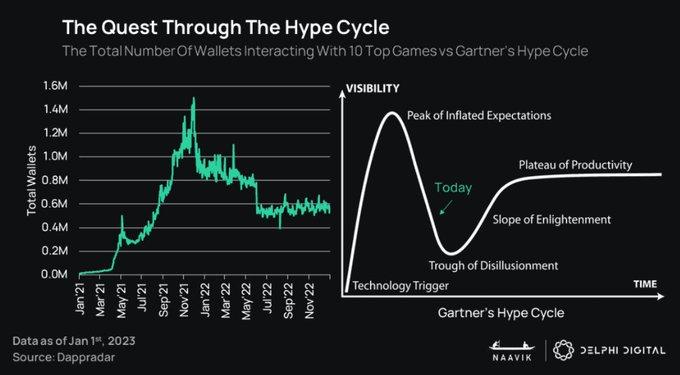
overview
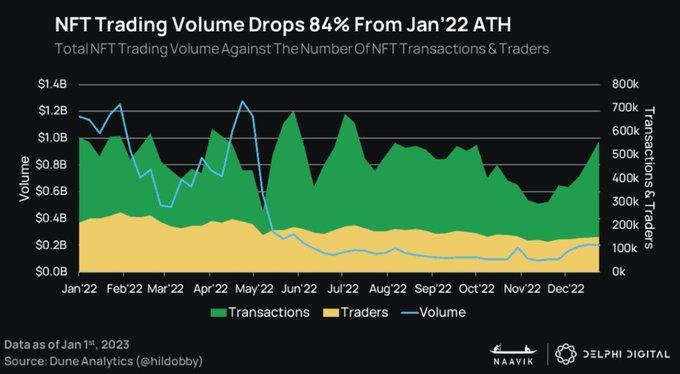
The term Web3 games is evolving and can be described as video games that integrate blockchain mechanics and economies. Throughout the hype cycle, people are more concerned about maximizing player revenue than pursuing fun game experience and sustainability.
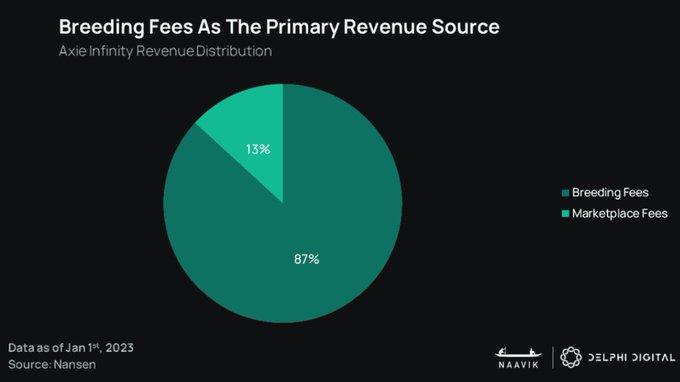
Despite the team's ambitions, this business model results in revenue being weighed down by the rate at which users grow, rather than by total player count and in-game spending. When most players extract more value/resources than they add or create, the economy becomes stuck in an endless loop.
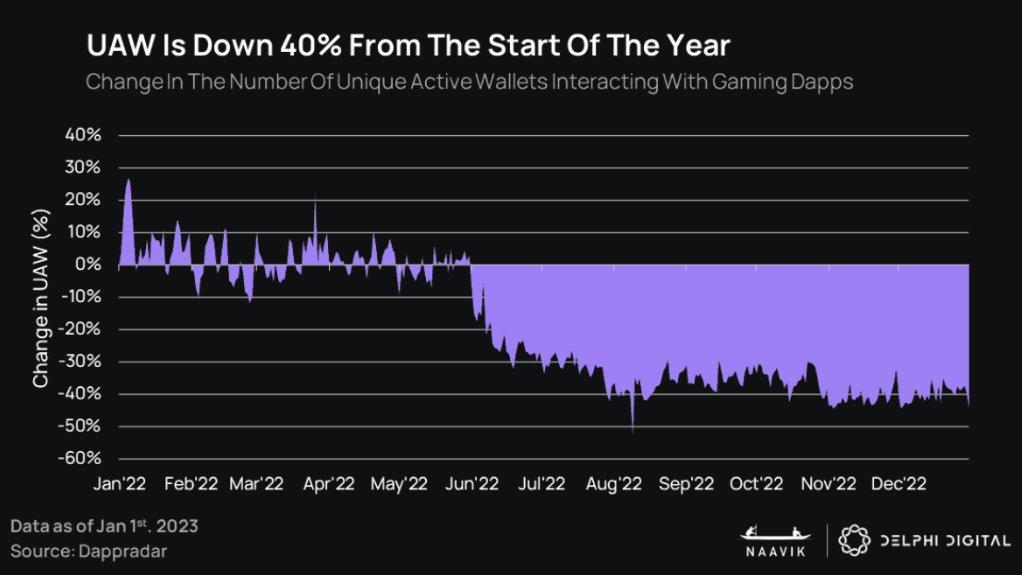
Now that most bad actors and hyperinflation models have largely disappeared from the market, 2023 can be described as ushering in a "big reset" - the P2E model is gradually dying out during this period, and high-quality builders will come to the fore. The focus will shift to premium games using cryptocurrency technology.
first level title
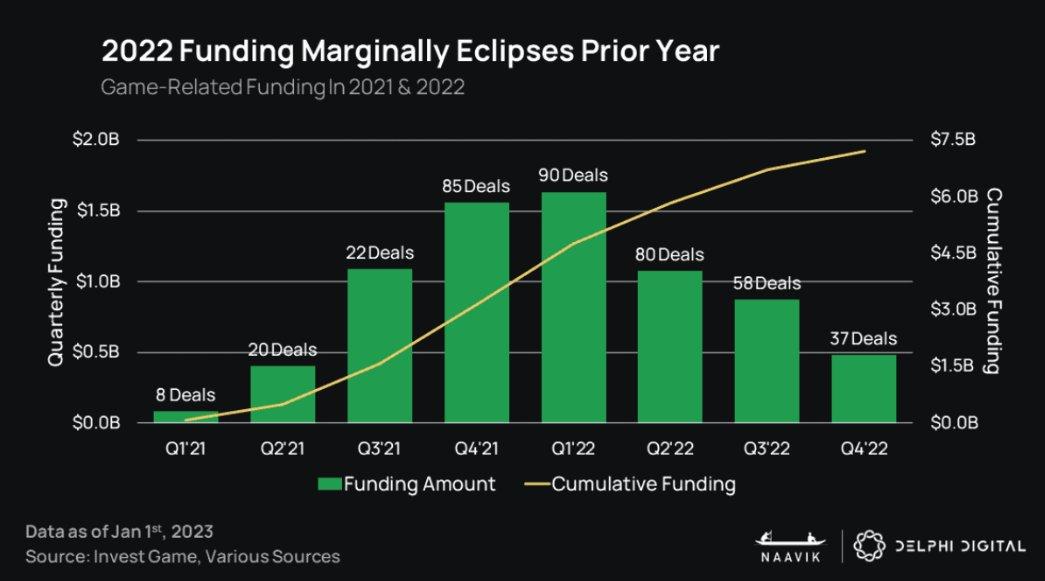
Investment status
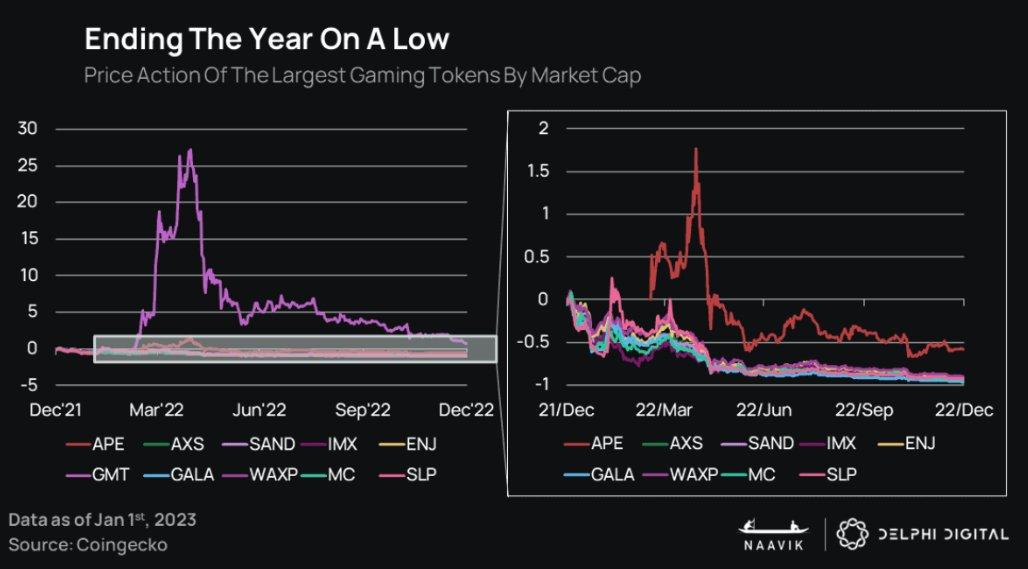
Since the start of the year, the 10 largest gaming tokens by market capitalization are down an average of 97%, partly due to a drop in retail investment interest. This is mainly due to the fact that the F2P model cannot maintain a sustainable economy and thus loses active player base.
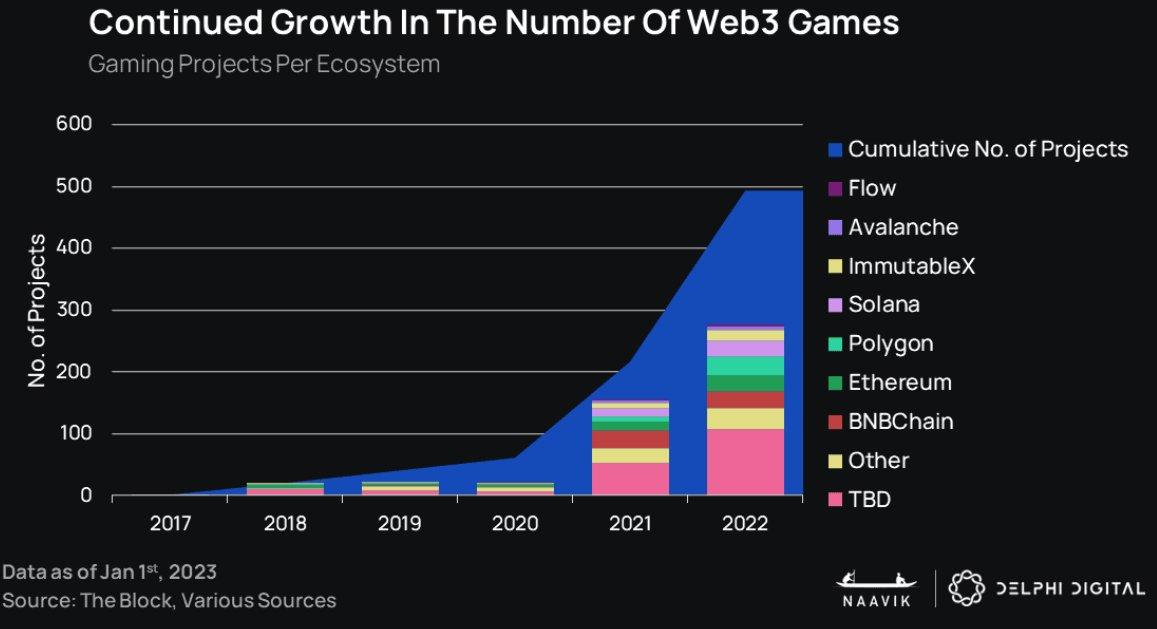
These poorly experienced games showed dismal earnings, and users quickly left. It's frustrating, but not surprising, since great games take 3+ years to craft. Despite this, the number of web3 games is still growing rapidly.
The investment environment has tightened
The overall funding environment is getting tighter, and the barriers to accessing funding are getting higher and higher. Many projects that were able to raise funds in the past may struggle in the near future. Traditional consolidation is a sign of a healthy market.
first level title
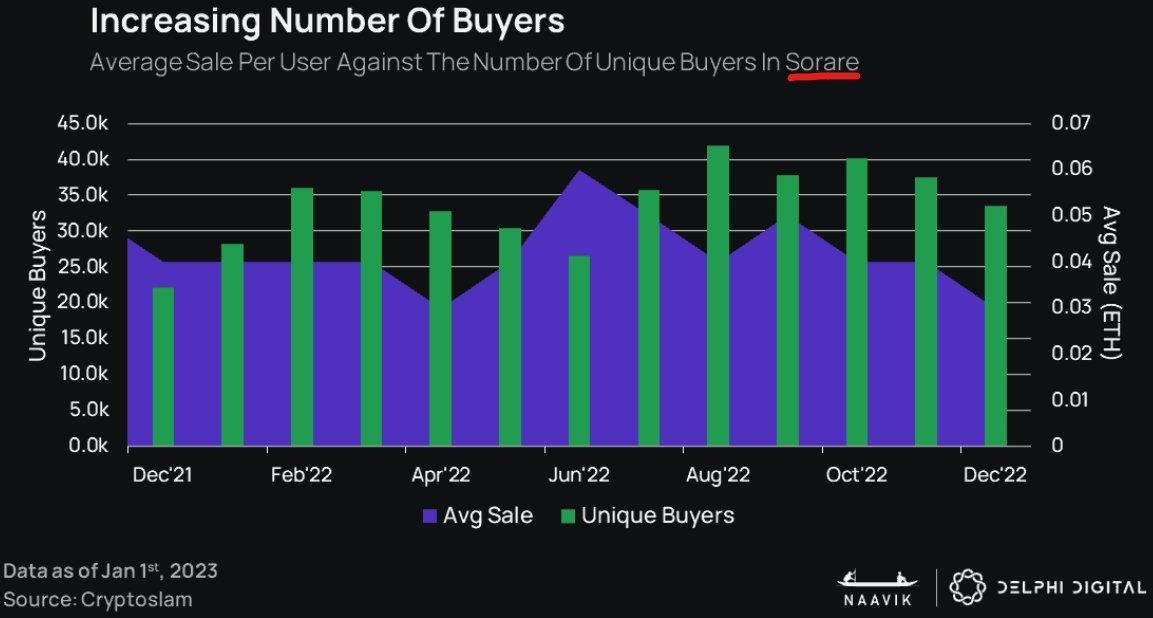
The State of Web3 Gaming
Video games whose primary purpose is to make money are bound to fail. A game made up of net earners is not sustainable. The game economy must reward those who create enormous value for the ecosystem.
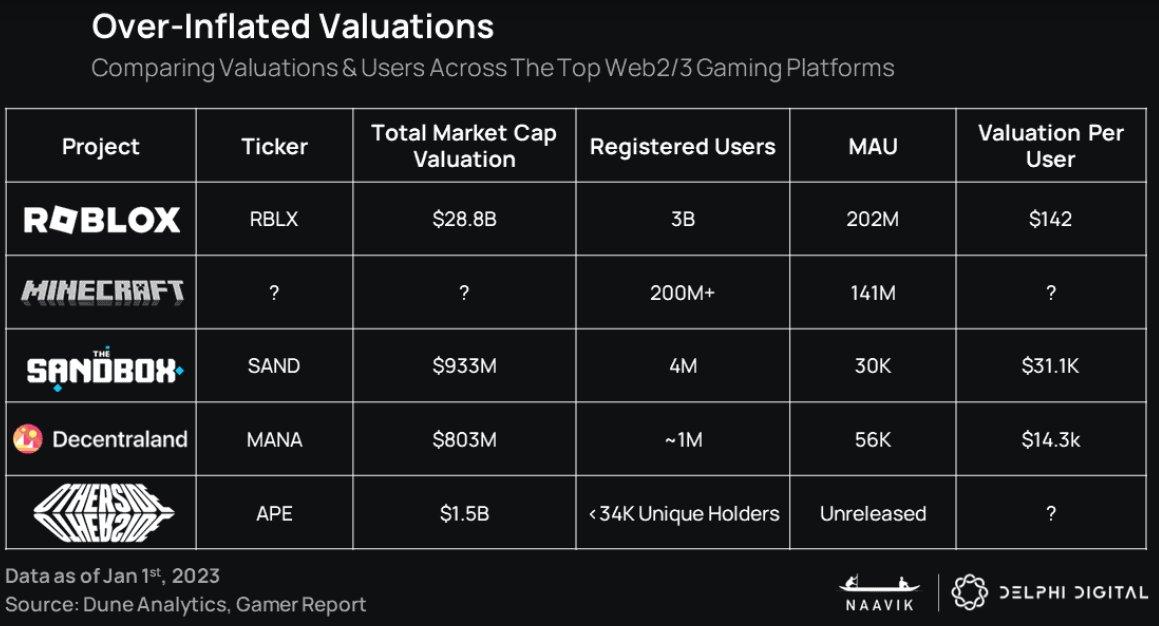
Developers should try to make the game as interesting as possible, encourage players to be more willing to experience the game, and delay gratification for monetization.
secondary title
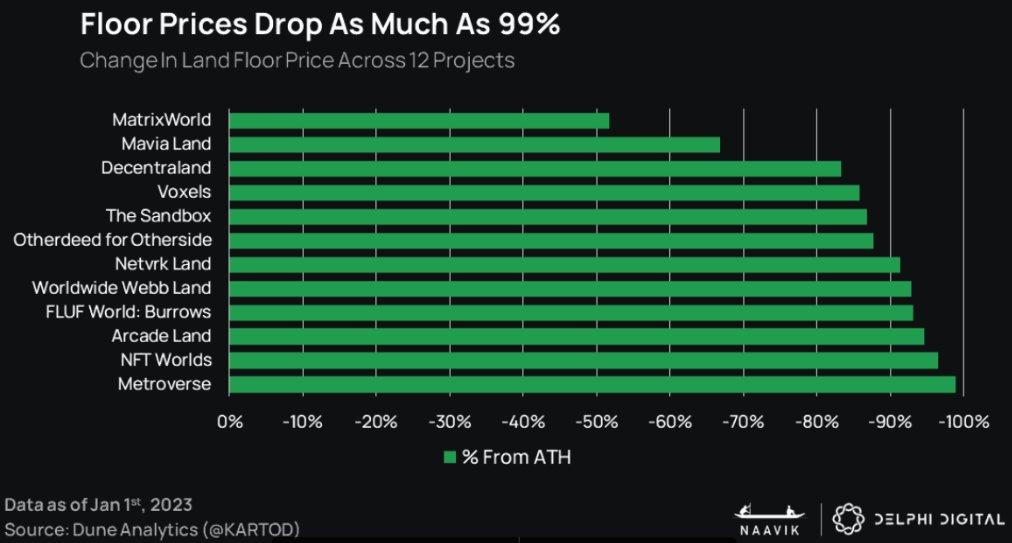
virtual real estate
Landowners influence the relationship between users and creators, often just to capture value, not to create.
This space needs creators to join in order to attract new users. Many first-generation land-based projects will not succeed without major adjustments. Land-based web3 games may not be limited to UGC (User Generated Content).
first level title
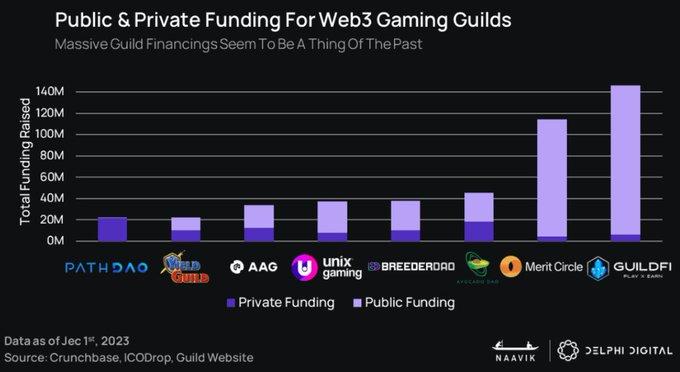
Current status of game guilds
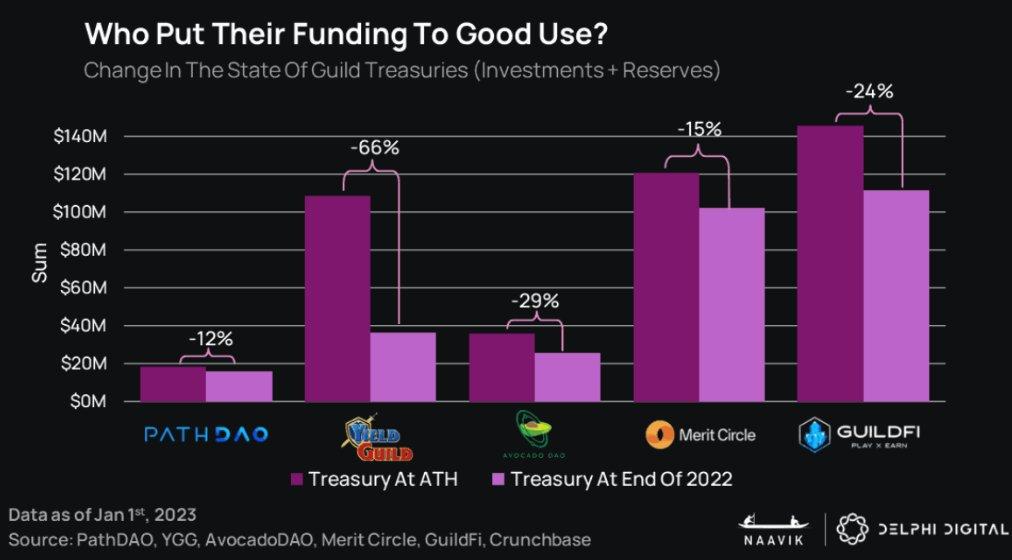
Due to the decline in the price of native guild tokens, lack of demand for P2E game assets, and lack of liquidity, many union funds have evaporated.
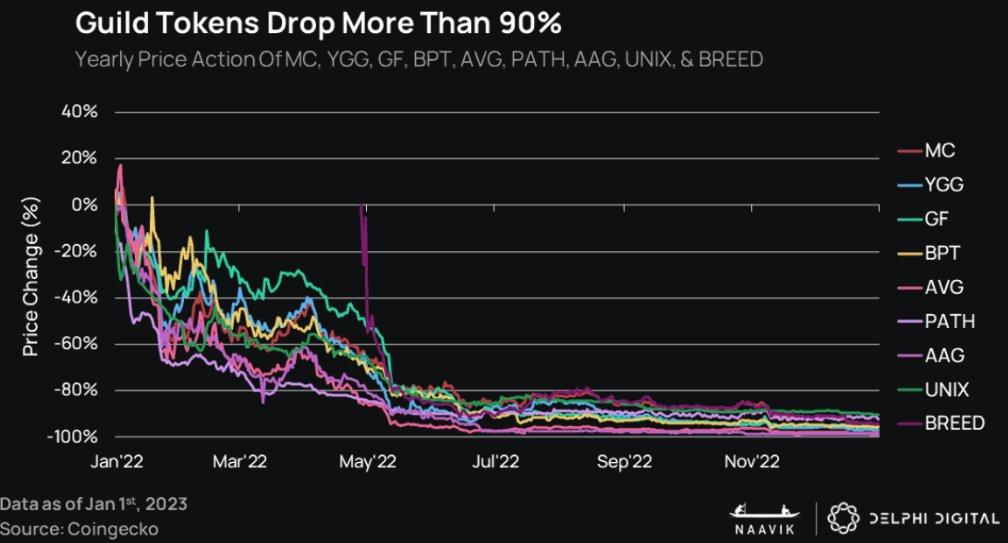
It is estimated that only 1% of the approximately 24,000 existing web3 guilds survive without funding. The remaining funds need to be used to develop value products and commercial sustainability. The value recognition of users lies in the scale of the community, and this value can also build a user base for the game.
The Current State of Web3 Game Infrastructure
Multi-chain strategies are quickly adopted, but wallets are still the top priority in the web3 world. The multi-chain world brings more addressable players and deeper liquidity opportunities, and also frees players from the constraints of logistics.
secondary title
Web3 games are still underdeveloped, lacking a proper ecosystem of publishers to support game makers and projects. Some companies have raised large amounts of capital to build and grow their own infrastructure.
For example: Animoca has a market cap of $470 million, Fenix Games has a market cap of $150 million, and Mythical games has a market cap of $225 million. These publishers are not limited to serving web3 products, but also hope to be able to exert technological innovation and provide full-stack solutions for game monetization and management.
first level title

Status of L1 and L2
ImmutableX:The original web3 games appear on ETH. The constant setbacks of other L1 solutions, such as the Solana downtime and the $650 million theft on Robin Bridge, confirm that ETH is the most trusted infrastructure for web3 games right now.
Polygon:Therefore, all the attention is now on the ETH L2 scaling solution. Some noteworthy projects include:
Arbitrum:Coins can be minted and traded without fees, and transactions are fast, attracting high-quality games such as Gods Unchained, Illuvium and 50 other games, and the remaining 1,000+ games are in testing.
Nova:Through the continuous establishment of the ecosystem through cooperation, we are committed to building Zk-rollup infrastructure and improving the expansion defects of the current monomer chain design. This deficiency was reflected in the launch of the game Sunflower Land on the chain. Poor performance.
The Beacon_GG:Home of the Treasure DAO Ecosystem
Gaming and social-focused L2 to improve network scalability
It raised 680,000 funds in its one-week open version, highlighting users' natural demand for high-quality gaming experience.
Solana:As market players make progress, the competition in the game will shift to L2.
Avalanche:Hold ground with titles like "Star Atlas" and "Aurory", working hard to improve user experience and mobile distribution in web3.
A $290M "Multiverse Incentive Fund" to attract gaming, defi and nft projects.
first level title
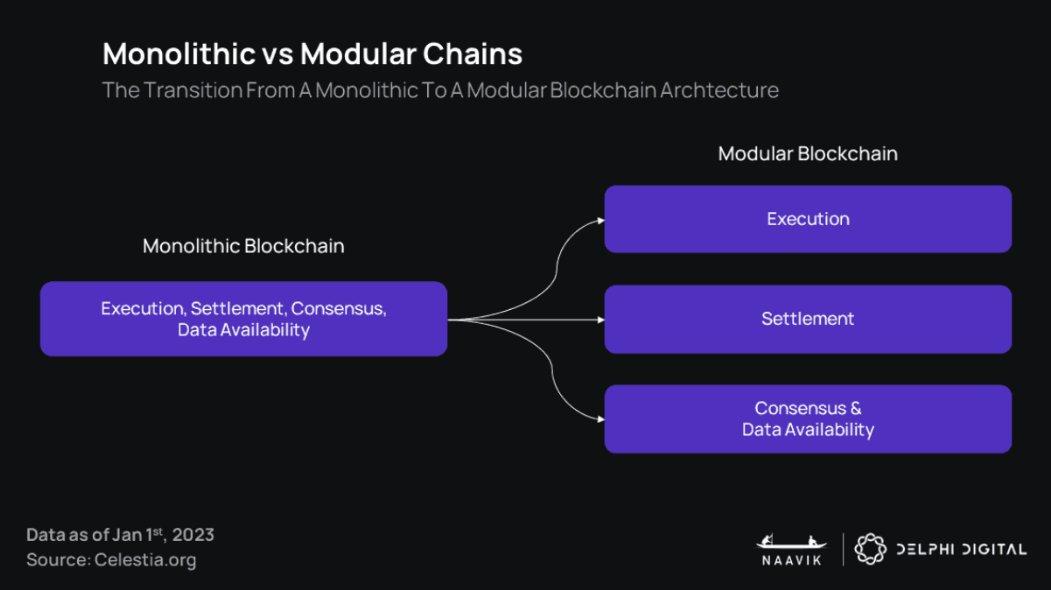
The Rise of Modular Blockchains
Application-specific chains: Polygon supernet, Avalanche subnets (DefiKingdoms, Crabada, Shrapnel)
This flexibility lends itself to games, giving teams more control over the user experience instead of having to build from scratch.
first level title
Platform Rules and Regulations
Widespread adoption of web3 games will be impacted by incumbent industry giants, who currently control major infrastructure in the web2 world. for example:
Wilo has banned the use of cryptocurrencies and NFTs across the Steam platform.
Game maker Mojiang and Microsoft: Ban NFTs in Minecraft.
Apple: Enforce that all transactions must go through their system, ensure they get a 30% cut of all app purchases, and limit other Web3 tools
But there are also some platforms that support Web3 games, such as Blankos and GalaGames' game Grit.
The current market compliance is still unclear, which makes it difficult for projects to start when building plans, and brings resistance to innovation, recruitment, and investment.
The following major events in compliance in 2022 may determine the future direction:
SEC investigates whether NFT and $APE can be considered securities
BlockFi fined $100 million for lending services
Free Minting: This is a powerful customer acquisition strategy that prevents assets from being considered securities (plus avoiding Apple's 30% fee).

This strategy can help NFT projects go online in the current depressed consumer market sentiment and low expectations.
first level titleForecast for 2023
More cooperation:Currently the space is too small for excessive competition among companies. More and more protocols are opening their infrastructure for everyone to use, such as Sequence, HyperPlay.
more games:More and more great titles will be coming, such as Ember Sword, Illuvium, Guild Of Guardian and DigiDaigaku.
Early stage overheating:
Tokenization of game items can lead to administrative complications and thus economic fragility. Interacting with these undeveloped games often creates overheating in the early stages of game development and economics.
Some potential solutions:
The transfer of consumables is restricted in the early stages of the game, and only after a certain period of time can the resources associated with the account be claimed. Set goals early on to ensure assets don't generate ROI indefinitely.
Limiting the economic relevance or lifespan of assets in the game, could use a battle pass system or quarterly economic resets, which were adopted by Diablo 2, Path of Exile and Escape from Tarkov, Bastion Night" and other games use.
PlayFi and Esports Monetization: The PlayFi model refers to the core game loop being free from capital. Monetization happens through a series of meta-games around the game, such as gambling, ticketing, prize pools, etc.
summary
first level title
summary
Despite the hacks, scams, Ponzi schemes, and tokens in freefall in the space, the influx of talent and money is encouraging. Some $12 billion has poured into the space over the past 24 months.
Many first-generation teams and projects in the field will face existential threats in the coming year. 2023 may not be the year that cryptocurrency gaming truly enters the mainstream. The last hype cycle will affect consumer desires in the short term.



